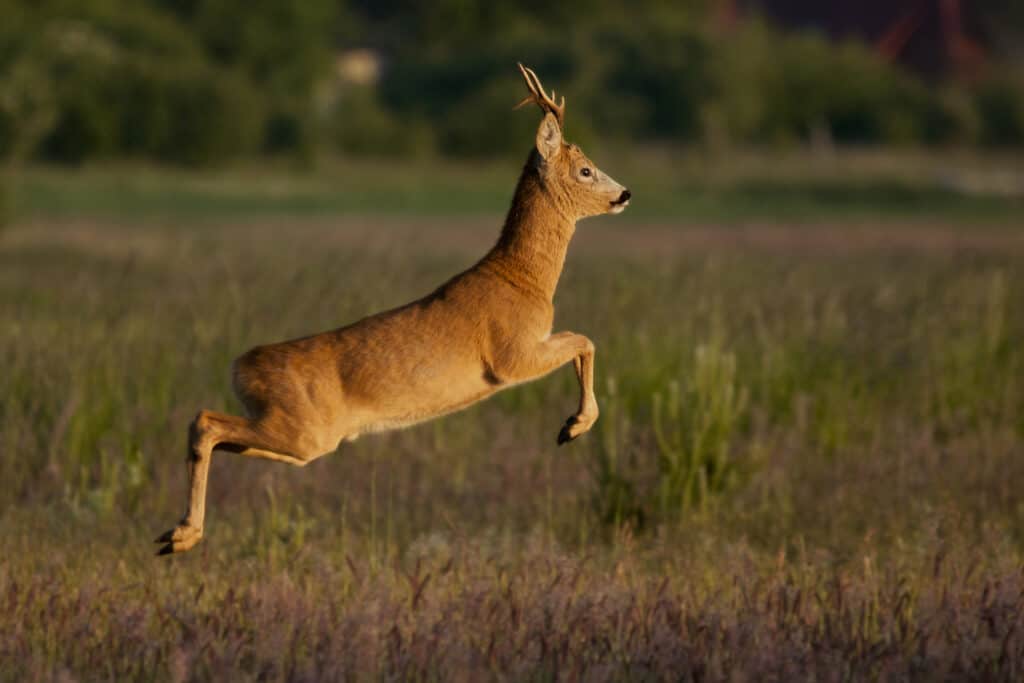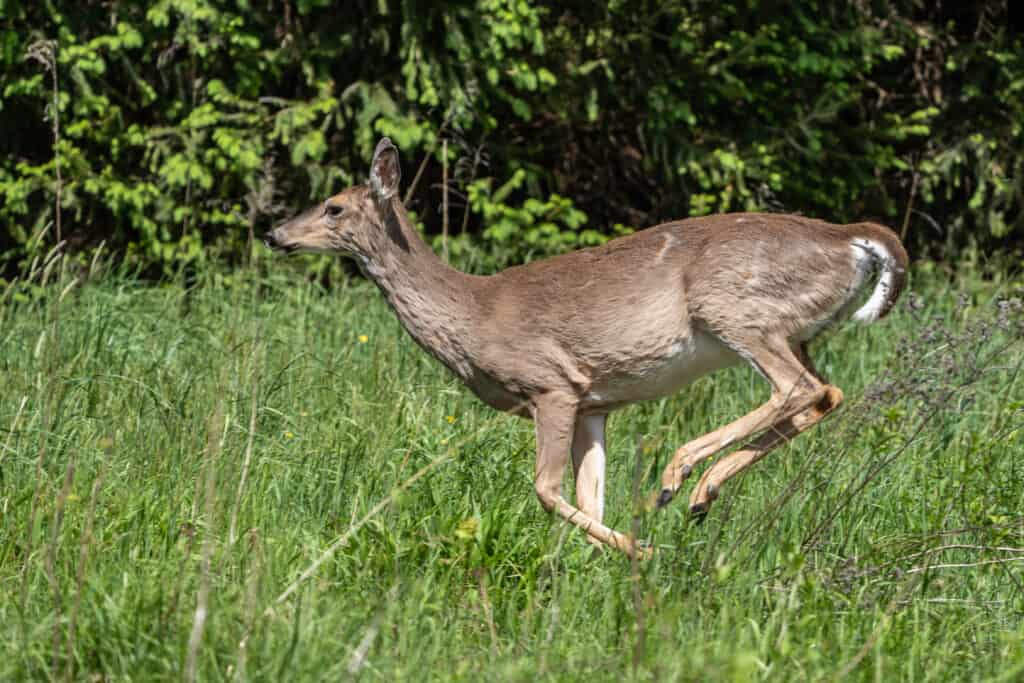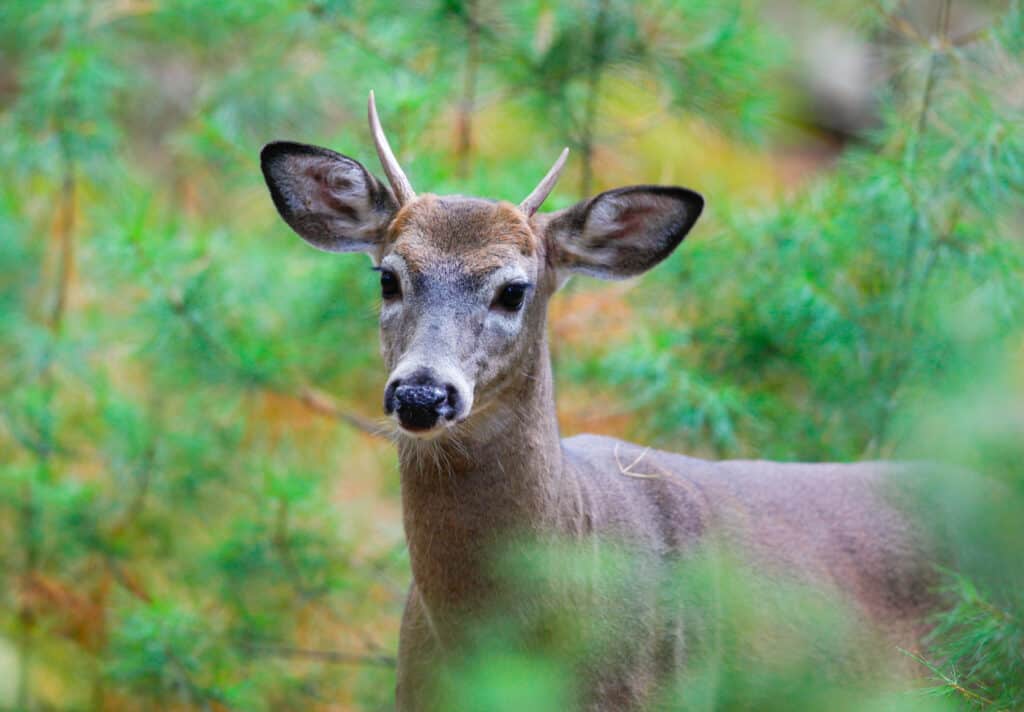Hunting in Texas is similar to hunting in other states. However, some differences exist due to Texas’ geography and deer populations. You can hunt many different animals in Texas, including deer. Most of these animals have the exact requirements for hunting, though there are a few differences.
However, even though the requirements are straightforward, all the different regulations can be overwhelming for beginners. Luckily, there are only a few simple steps to start hunting, though mastering all the regulations can take time.
To help you out, we’ve written this guide to hunting in Texas. It’ll help you get prepared and ready for deer hunting season.
Hunter Safety Requirements
To hunt in Texas, everyone must take a hunter education course if they’re born after Sept. 1, 1971. There are a few different ways to take this class, including online and in-person. Of course, how exactly this course works depends on the hunter’s age.
To become certified, the hunter must be at least nine years old. Between the age of nine and seventeen, hunters must take an in-person course – at least partially. You must sign up for the classroom portion online. This includes six hours of firearm and hunting safety, ethical considerations, and a final exam.
Sometimes, the classroom hours will be extended to cover other topics. For range use, additional fees are sometimes included.
Alternatively, those between the age of nine and seventeen may take an online classroom course followed by a field course. Be sure to register for the field course first, as they have a maximum number of students. Then, you can take the online portion. This includes four hours of field instruction, firearm training, and a “hunter skills” trial.
Anyone over seventeen does not need to take an in-person portion. Instead, you can take it all online. Register with an approved online provider. The fees depend on the provider you choose.
You can defer from a hunting education course temporarily. This is called “mentor hunting.” There is a small fee to defer, and you must be accompanied by a mentor whenever hunting. The mentor must have a valid hunting license and have completed a hunter safety course. This deferral can only occur once, though.
There is also an optional 101 course that you can also take. This isn’t required, but it is useful for those who want more information about hunting. These courses are seasonal for deer specifically. There are in-person classes and online classes. The National Deer Association runs these courses.
Hunting Licenses for Deer

You need a license in Texas to hunt deer.
©Tomasz Wrzesien/Shutterstock.com
To hunt deer in Texas, you must also purchase a hunting license. These licenses require proof that you’ve completed a hunter education course, so you’ll have to take that first. All license fees are non-refundable. They are used to cover conservation efforts in the state.
You’ll need a physical license, as they come with tags. To tag a deer, you must have a physical tag. However, there is a digital license that specifies electronic tagging.
There are both resident and non-resident tags. Resident tags are cheaper. However, you must have proof of residency for more than six months. The only exception to this is active duty military and members of the Kickapoo Traditional Tribe of Texas.
In addition to the license, you must purchase an archery endorsement if you’d like to hunt during the archery-only season.
You can purchase a license on the state’s website or from several retail locations. Some licenses are only available at the Austin headquarters or a regional facility.
Seasons for White-Tailed Deer
The deer season in Texas is divided into multiple seasons. These seasons are not always available in every area, though most states follow the general outline. However, exact regulations can vary from area to area, so check.
Archery-Only
All counties with an open season have an archery-only season. This season is throughout October, which means it takes place before all the other seasons. Therefore, this season is quite sought after, though it does mean that you’ll have to hunt with archery equipment only.
General Season
This season allows you to utilize all approved weapons. Therefore, this season is the most popular. It’s from November through January. However, the exact dates do vary. Therefore, be sure to check your dates in your region.
Youth-Only
There are several youth-only weekends throughout the state. There is also a week or so in January in both zones. Only those under 16 are allowed to hunt on these dates. Therefore, it is easier for younger people to hunt this weekend.
Muzzleloader
During muzzleloader weekend, you may hunt with a muzzleloader only. This includes weapons that are loaded through the muzzle. However, you can not use any modern weapons during this period.
This season overlaps with the later youth-only season.
Special Late
This season has special regulations and is mostly about lowering the deer population. This season varies yearly, depending on your area. The needs of the deer population vary each year, after all.
Currently, the harvest is restricted to antlerless deer and unbranched bucks. We’ll discuss the difference between a branched and unbranched deer below.
Bag Limits
Each county has its own limit. You can hunt in multiple counties, however. The statewide deer bag limit is five white-tailed deer. You may only take three bucks in total, as well.
This doesn’t apply to MLDP properties, however.
Reporting Your Harvest
After taking your deer, you must report your harvest in certain counties. Reporting must be done within 24 hours after harvest. You can do this online or via your mobile app. However, this reporting requirement changes yearly. Therefore, it’s vital to check and see if you need to report it or not.
Tagging a Deer

It is very necessary to tag each deer you take.
©Amy Lutz/Shutterstock.com
You also have to tag each deer that you take. If you have a paper license, you must remove the tag and fill it out right after killing the deer. Then, attach the tag to the deer. You can attach it anywhere. However, be sure it is visible. You can put the tag in a bag to ensure it doesn’t get dirty.
If you have a digital tag, the instructions are a bit different. At this point, you have to use the app to tag the animal. Be sure to download the app before you head to the field. You don’t want to get out in the field and find out that you don’t have the service to download the app.
Once you tag the deer, you’ll need to add a handwritten tag to the carcass. You’ll need to utilize a waterproof tag of some sort. Many people utilize duct tape and a sharpie. The app will provide the confirmation number after you submit the harvest report if you have data.
If you don’t have data, you’ll have to wait until data is available for the confirmation number. Therefore, before the confirmation number is available, you should write your name, hunting license customer number, and the time and date of harvest. Then, you can replace it with the confirmation number when available.
Buck Deer Definition and Antler Restrictions
A buck is defined as a deer with any antler points protruding through the skin that is larger than one inch. For bag limits, any other deer is an antlerless deer – even if it is a male.
In some areas, there are antler restrictions. In these areas, harvested bucks must meet certain requirements. For the buck to be legal, they must meet these requirements. For instance, only one of the bucks you harvest may have two branched antlers with an inside spread of 13″.
In these areas, the legal bucks must meet the following requirements:
- One unbranched antler
- An inside spread of 13 inches or greater
Unbranched antlers do not have a minimum or maximum width. These unbranched bucks do not meet your one buck of 13″ or greater.
Of course, determining the inside spread can be subjective. The best option is to look at the ears and judge the spread based on this.
If the edge of the deer’s antlers is beyond their ears, then it’s 13″ (usually). However, bucks with shorter antlers that branch do not fit any criteria (and are therefore illegal).
A branching antler must have a point. The definition of a “point” is a projection that extends over one inch. You can also count the tip of the main beam as a point, but a branching antler must have more than one of these.
Proof of Sex
When transporting the deer before processing, you must have proof of sex on the deer. There are several options that you may keep. You can keep the head of an antlered deer, for instance. You can also keep the sex organs and tail. The proof should stay attached to the deer. You can’t just have a separate head or sex organ.
You can skin or quarter the deer for transport. However, be sure you keep the sex organs attached. You may only process the deer beyond quarters during the “official” processing.
Chronic Wasting Disease Information

CWD has been found in Texas.
©iStock.com/Louise Wightman
The chronic wasting disease is a serious condition that affects deer, elk, and similar animals. It is always fatal and extremely contagious. Once it gets into an area, it is nearly impossible to remove it. This disease is affecting deer populations in several localized areas of Texas.
To combat this disease, Texas has several CWD zones. The regulations vary in these areas as the state tries to prevent the disease from spreading.
If you harvest a deer in Texas, you must bring the animal to a check station within 48 hours. You must check each animal harvested and have a receipt before processing the deer. You cannot transport the deer outside the zone until it is checked.
Depending on how the disease progresses, certain zones may have other regulations. Furthermore, new zones can be added if the disease is found in new locations.
If you harvest a deer outside of one of these areas, you can get it tested by a wildlife biologist. However, this isn’t required.
Transferring Deer
You can transfer deer to other people if it is properly tagged (and was legally taken). The deer does not count towards the new owner’s bag limit if a Wildlife Resource Document accompanies it. You can print this out online or have a written document that contains the same information.
The original hunter must accompany the animal until it reaches the final place of storage or the recipient’s residence.
You may not import any animal into Texas unless it meets certain regulations:
- You must possess a valid license and other applicable permits in the state where it was taken. In other words, you have to possess it legally.
- You must provide a valid driver’s license if asked.
You can transport the deer into the state if you meet these requirements. Be sure to have any necessary tags. In other words, follow the laws in the state.
Up Next
- White-tailed Deer
- Deer Feeding Times: When Do Deer Like To Eat?
- Deer Population by State: How Many Deer are in the U.S.?
The photo featured at the top of this post is © WildMedia/Shutterstock.com
Sources
- Texas Parks and Wildlife Department, Available here: https://tpwd.texas.gov/regulations/outdoor-annual/hunting/general-regulations/transfer-of-wildlife
- Texas Parks and Wildlife Department, Available here: https://tpwd.texas.gov/regulations/outdoor-annual/hunting/general-regulations/after-killing-a-deer
- Texas Parks and Wildlife Department, Available here: https://tpwd.texas.gov/regulations/outdoor-annual/regs/animals/white-tailed-deer
- Texas Parks and Wildlife Department, Available here: https://tpwd.texas.gov/regulations/outdoor-annual/hunting/
- Texas Parks and Wildlife Department, Available here: https://tpwd.texas.gov/huntwild/hunt/
Thank you for reading! Have some feedback for us? Contact the AZ Animals editorial team.







